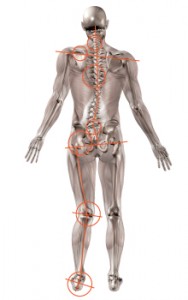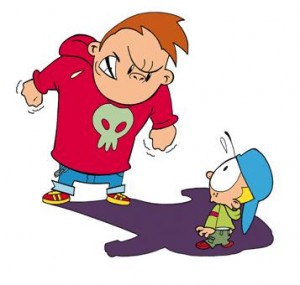It is very important to look after our bodies, especially those of us who put extra duress on our bodies with regular training. However, many people develop joint problems throughout their martial arts careers and simply assume that it is the price we pay for training and/or getting older. But although some training methods can be damaging, there are other things that we should look at too as I’ve learned from my own personal experience of consistent knee problems.
Although I’ve had some knee injuries caused by training, my knees actually got a lot worse during an extended period when I was out of training due to domestic issues (very long story).
Did you realise that our feet were not designed to walk on a completely flat surface. But what do we walk on all day (indoors, at work and on the roads); then go and train on in bare feet? Yes, flat surfaces!
The reason that our feet have an arch in them is that back in our cave man ancestry our feet were designed to walk on earth, sand, muddy fields and so on, where the foot would sink in slightly and the arch would be supported. However, without well designed footwear, we often have no support in our arches at all these days.
On average most people take 8,000 – 10,000 steps per day. This is a high demand on a foot that is not properly supported. As each foot contains 28 bones, it is not surprising that some thing is going to start moving around.
This lack of support in the arch can often lead to it collapsing. In itself that is quite innocuous. However, a collapse arch causes the foot to pronate (most of the foot twists inwards, whilst the heel turns the other way to compensate). When you walk, as well as your foot going from heel to toe, it also rolls from rear outer edge to front inner edge. This in turn causes the bones of the legs to re-align in order to compensate (knees tend to turn inwards). Over a period of time the muscles, tendons and ligaments will actually re-adjust themselves too and take up new positions. Then when you train, muscles that have become overly strong on one side will start pulling your knee joint to that side, whilst the weakened muscles on the other side are unable to balance it. Tendons and ligaments that have been pulled out of place will rub against the bones, especially when doing fast kicks or deep stances.
 This is what happened to me. When I first started training again after a long break, I was not sure that I’d be able to continue due to constant pain in my knees. Fortunately the problem was not too severe in my case. If left unchecked, pronation can also go on to effect the hips and spin, as they adjust to compensate for the mis-aligned legs.
This is what happened to me. When I first started training again after a long break, I was not sure that I’d be able to continue due to constant pain in my knees. Fortunately the problem was not too severe in my case. If left unchecked, pronation can also go on to effect the hips and spin, as they adjust to compensate for the mis-aligned legs.
Women in particular are vulnerable. I don’t know why, possibly it’s due to woman’s shoe fashions, possible the effects are made worse by carrying extra weight during pregnancy, but I’m guessing here.
So if you think this may be a problem that is affecting you, what can you do about it?
You can start by going to see an osteopath or chiropractic. They can check whether or not you are pronating. If you are, then you may be recommended to use orthotics. These are inserts which are placed inside the shoes, which support the arch and restrict the heel from rotating. It is a slow process, but after a while your foot should become accustomed to this new corrected position. This will of course reverse the procedure described above and the rest of the body will start to realign and correct itself.
My knees are still far from perfect, but they have made a very notable improvements due to orthotics. My ability to kick and go lower in my stances are much better than when I first returned to training.
Being naturally flexible and fastidious about technique, I was noted as a good kicker in my younger days. But I could hardly kick at all on my return to training. Now I can kick reasonably well most of the time. For the first hour of training I usually feel quite good. Sometimes if I go over that I start to get sore knees, but I am able to train and I know that I’ll be able to for many years to come. It’s a slow process, but martial arts are for life. So if you are having joint or back problems which effect your training, then I seriously recommend that you get your structure checked.
Many people turn to supplements when they have a joint problems, but if the the joints are not aligned correctly then you are throwing your money away. Don’t get me wrong, some supplements can be very good and I use them too. But the most important thing is to correct the structure first to prevent further damage. Then you can look to repair the damage that has been done before.
Many people often have to face the stark choice of whether or not they give up the training that they have loved for many years, and it’s a horrible choice to have to make. I know, I’ve had to consider it; but I always look for a way to solve my problems. If you know anybody who you think can be helped by this article, then please pass it on to them. Don’t just assume that it comes with age, because sometimes it doesn’t have to.


